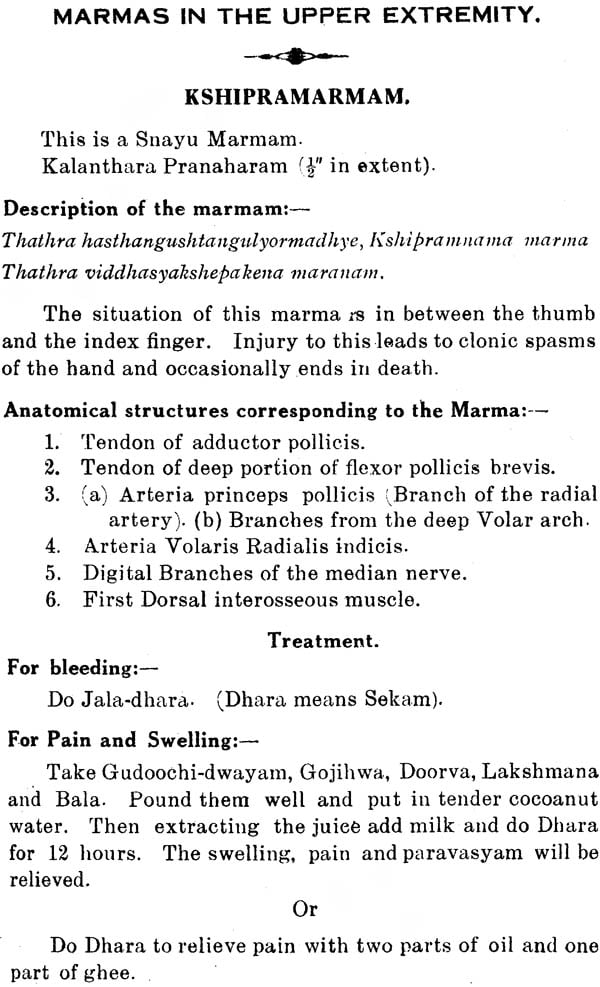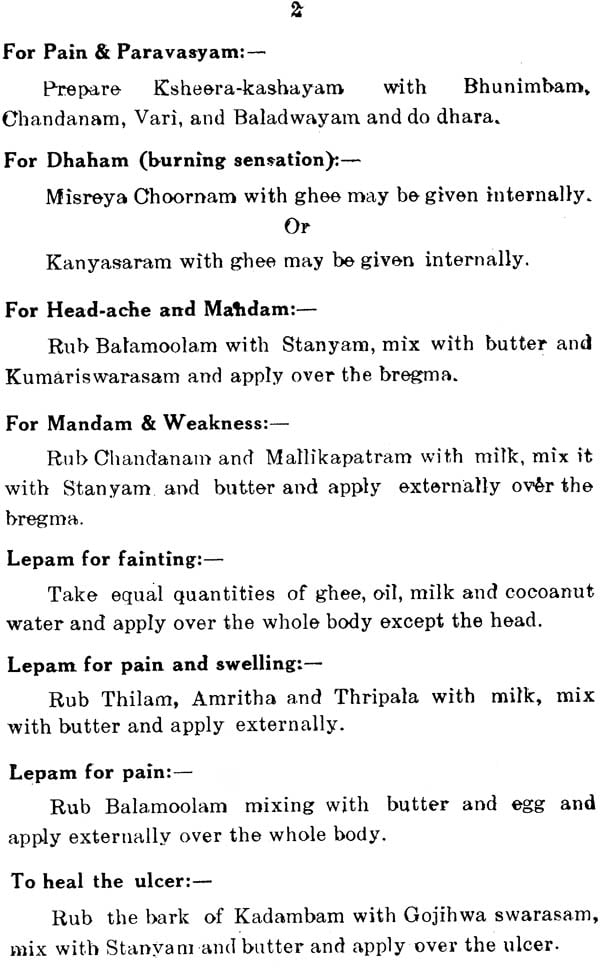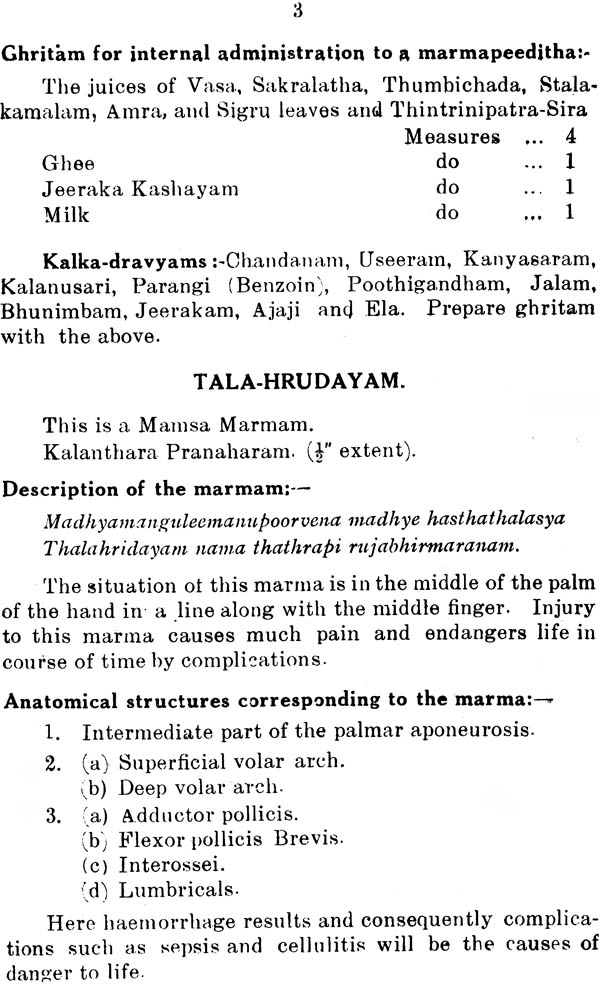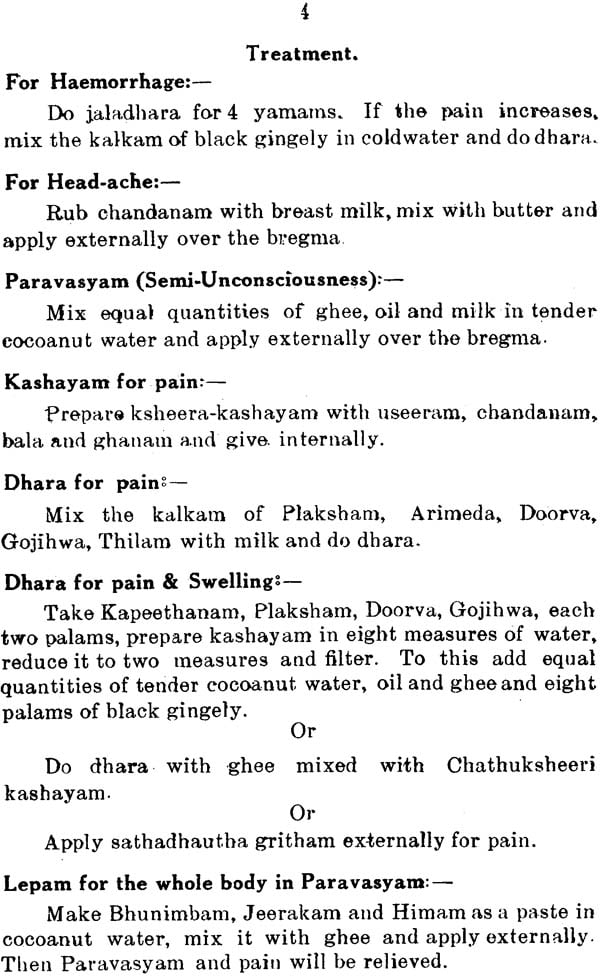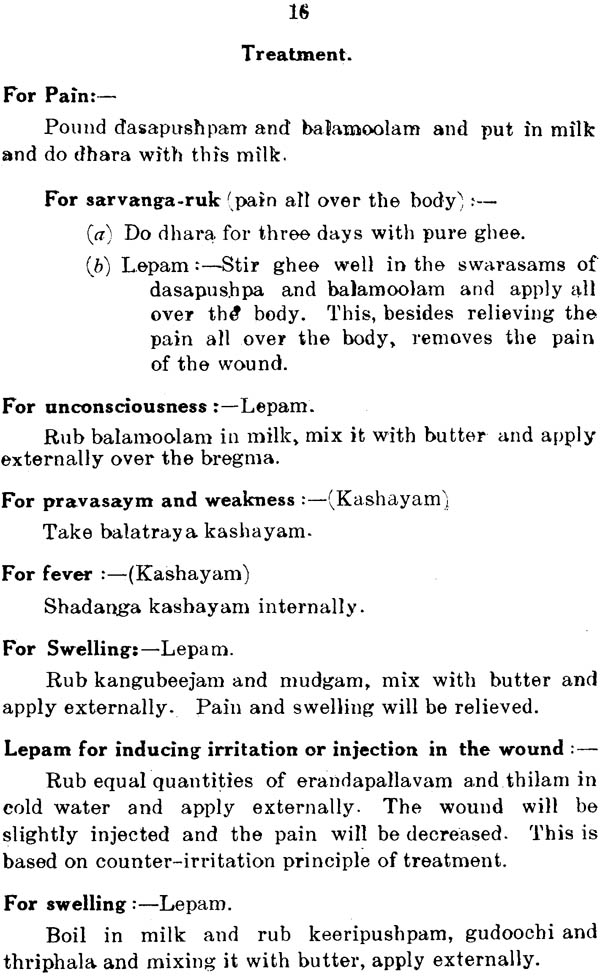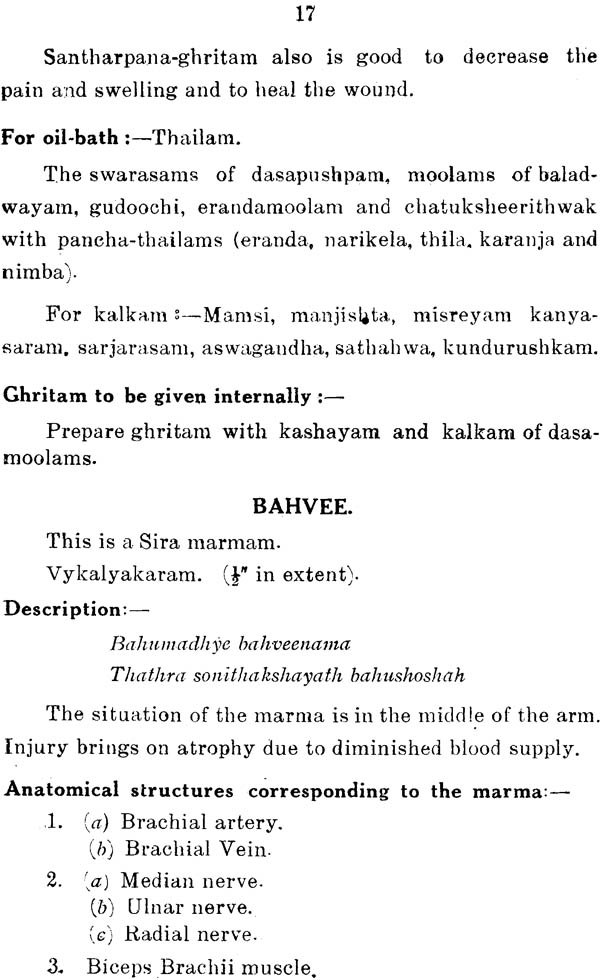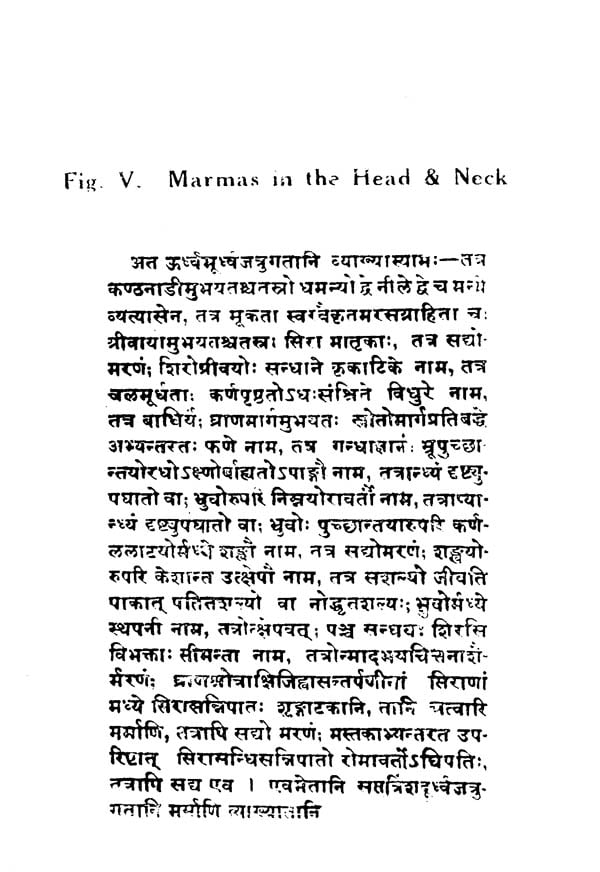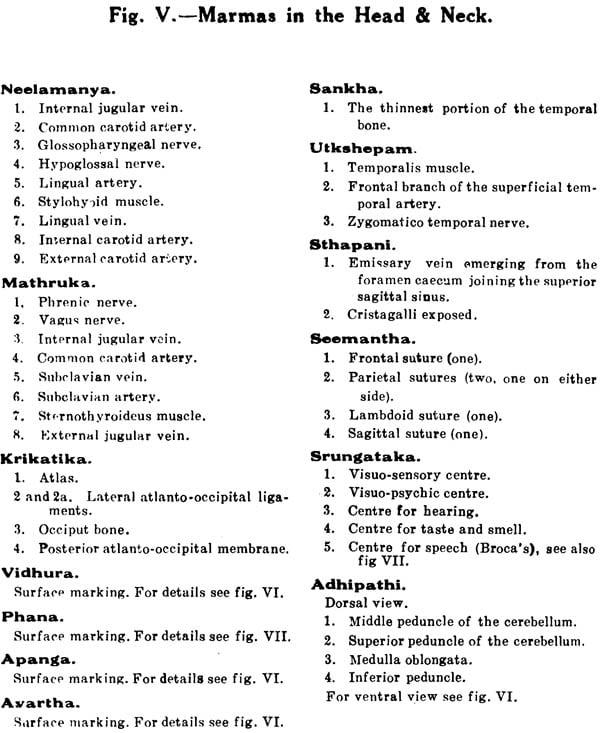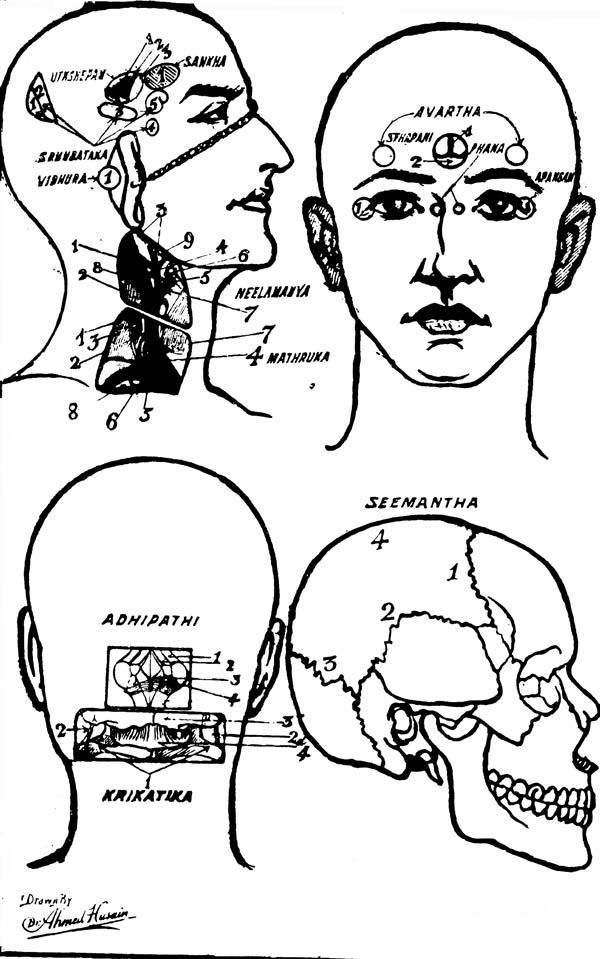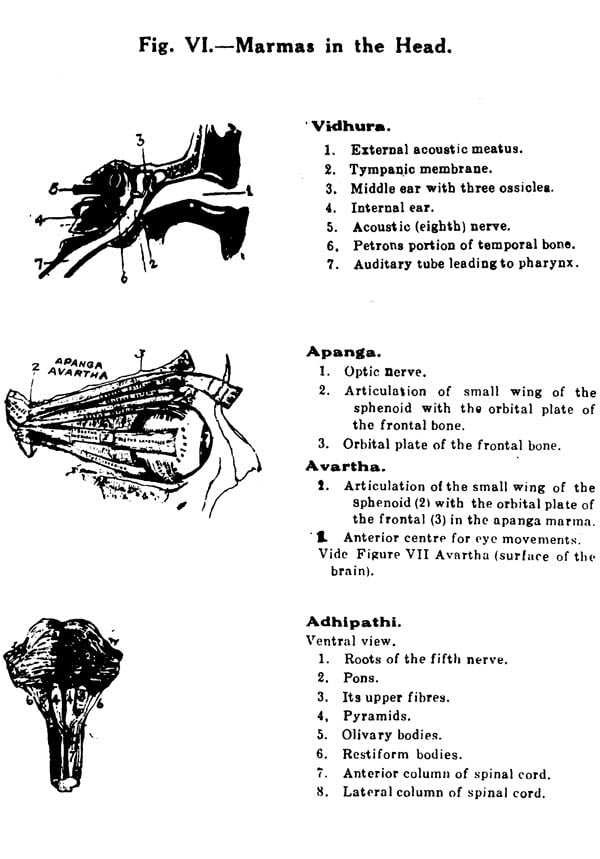
Comparative Study of The Marmas
Book Specification
| Item Code: | IDK204 |
| Author: | P.V. Krishna Rao |
| Publisher: | Rashtriya Sanskrit Sansthan, Janakpuri |
| Language: | English |
| Edition: | 2007 |
| Pages: | 80 (8 B/W Illustrations) |
| Cover: | Hardcover |
| Other Details | 9.7" X 6.3" |
| Weight | 280 gm |
Book Description
Ancient Hindus developed all the sciences to their fullest scope, including the science of Ayurveda. The science reached its zenith in the period of Asoka and other Buddhist princes and also spread to far off countries like, Egypt, Greece, Rome and Arabia. But there was a set back to this glory from 300 B.C. onwards owing to the continuous invasions of India by Greeks, Seythians ad Hunas for over hundred years, causing blood shed ad incendiarism resulting in the destruction of the literature of all India sciences. Subsequently, it was during the period of Vikramadithya (about 5th century A.D.) there was an attempt to revive the lost sciences by getting them re-written. But, again after the 11th century A.D., all these books met the same misfortune of being destroyed by successive Mohammedan invadors, leaving us no legacy except a few chips of the old blocks here and there, which forms the source and inspiration for modern investigations. In ancient literature including the Vedas and the old Buddhist works, references to Anatomy are not wanting. Quotations of descriptive Anatomy have been found to commentaries written over thousand years ago on surgical works like Bhojasamhitha. Dr. Hoernle in the preface to his valuable book, 'Medicine of ancient India,' observes, "Probably it will come as a surprise to many, as it did to myself, to discover the amount of anatomical knowledge which is disclosed I the works of the earliest medical writers of India. Its extent and accuracy are surprising, when we allow for their early age probably the sixth century before Christ and their peculiar methods of definitions."
The Ayurvedic science was divided from the treatment point of view eight parts (Ashtangams) namely, Kayachikitsa (general treatment), Balachikitsa (treatment of the diseases of women and children), Grahachikitsa (psychotherapy), Oordhwanga chikitsa (treatment of the eye, ear, nose and throat), Salya chikitsa (surgery), Damshtra chikitsa (toxicology), jarachikitsa (science of rejuvenation) and Vrushachikitsa (science of sexual vigour). It was left to the great sage Susruta to specially study and practise one of the above ranches namely, Salyathanthram (surgery), after equipping himself with a thorough knowledge of the Ayurvedic Physiology and Anatomy (Sareera). We are indeed grateful to him for his invaluable work on this subject. The knowledge of Anatomy formed a part of the preliminary courses in the study of Medicine and Surgery in the past.
Susruta stated that the study of anatomy would be necessary by a through dissection of the dead past.
Sodhyayithwa mruthamsamyak drashtavyongavinischayah.
(5 the Chapter, Susruta, 48th. Sloka).
Besides, the method of preparation and the detailed technique of dissection in those days were definitely mentioned by him. Dissection was also enjoined by Vagbhata and there are evidences that it was in practice at that time. Briefly comparing the old Ayurvedic Anatomy with the modern, there are points where they do not apparently tally, for example, regarding the number of bones in the body. They are said to be 360 by Atreya, 300 by Susruta, whereas, they are about 200 according to the modern Anatony. But this so called discrepancy has been clearly explained das follows, by Dr. Hoernle in his "Medicine of Ancient India" (Part I. Osteology).
"This large excess is principally due to the fact that (besides including the teeth, nails and cartilages) they counted prominent parts of the bones such as are now knows as 'processes' or 'protuberances', as if they were separated bones."
Taking another instance, the layers of the skin 1. Avabhasini, 2. Lohitha, 3.Swetha, 4. Thamra, 5. Vedini, 6. Rohini and 7. Mamsadhara, as described in the Ayurvedic texts, correspond to its microscopic layers according to the Western Physiology.
Further, in some aspects, Ayurveda has been a source of knowledge, made use of, by the modern scientists. It may be mentioned here, that so many centuries ago, Ayurvedic Anatomy (Sareera) described Embryology to start with, while this subject has been only recently clubbed with modern Anatomy.
Marmas were also included in Sareera, because the locations of the same, according to the surface anatomy, was found necessary in the practical treatment, both medically and surgically.
Marmavignanam (the knowledge of the Marmas), as existing in Ayurveda, had fallen long into oblivion, regarding its practical applications as an art like many other branches of Ayurvedic literature.
What is a Marma? The world Marma is derived from the Sanskrit root, 'Mru,' 'Marane' and it applies to a place of vital importance in the body which, if injured, results in serious consequences, or death sooner or later.
Jeevasthananthu marmasyath
(Rajanighantu).
Susruta defines the Marma as a place where mamsa, sira, snayu, asthi and sandhi are present. It is said that they are the seats of concentration of pranic currents. Dalhana opines that in a Marma, all the above mentioned structures should find a place and the name of the marma is determined by the predominant structure out of these. But Haranachandra Chakravarthi says that the Marma can be formed by the presence of one or more of the above structures.
Yathasambhavam vyasthasamasthanam mamsadeenam melanani.
It was also told by Susruta,
Soma marutha thejamsi rajas-sathwa-tamamsicha marmasu prayasah pumsam bhoothathmachavathishthathe marmaswabhihatho thasmath najeevarnthi sareerinah.
(Susrutha, Sareera, 7th Chap. 75th Sloka)
meaning thereby that the Marmas are the places for Soma (Kapha), Maruta (Vayu) and Tejas (Pitta) representing the three Doshas (Physical powers), Rajas, Thamas and satwa, the three Gunas (mental forces) and the Bhootatma (Supreme power or force controlling the body and mind). Therefore injury to the Marmas results in death.
Considering the origin and the practical utility of Marmas, Charaka gives great importance to three Marmas namely Vasti, Hrudaya and Siras (head) out of 107 marmas and these are included in the ten Pranayatanams (the seats of life). He considered them of paramount importance from the treatment point of view in as much as the vitiated doshas affect the Marmas and cause diseases which ay prove fatal. Surgically it is of more practical use, due to the fact that injury to any of the Marmas, may result in death immediately or later by complications or end in deformity of a particular part of the body. Injuries of an equally severe nature anywhere else in the body need not necessarily prove fatal, provided the marmas in these parts are intact. Surgeons of Ancient India laid down the rule that in a case of surgical operation, the situation and the dimension of ach local marma should first be studies will; and the incision for operation should be made in such a ways as to avoid even the edge of a marma. Hence all the marmasthanas should be carefully avoided in all surgical operations.
The knowledge of the marmas was practically made use of in ancient warfare and in hunting after wild animals, by hitting the enemy or the animal respectively, aiming at the marmas with the arrows. This Science is also practised I the art of wrestling in some parts of India and Japan (Ji Ju Stu). I may add that the science of Marmas and its practical application has been tried in South India even on animals like elephants, for controlling them very easily and effectively.
| | ||
| 1. | Introduction | i-x |
| 2. | Marmas in the Upper Extremity | 1-22 |
| 3. | Marmas in the Lower Extremity | 23-31 |
| 4. | Marmas in the Abdomen and Chest | 31-42 |
| 5. | Marmas in the Back | 43-52 |
| 6. | Marmas in the Head and Neck | 53-68 |
